栈实现队列, 队列实现栈
发布时间:2024年01月24日
栈实现队列
实现方式:
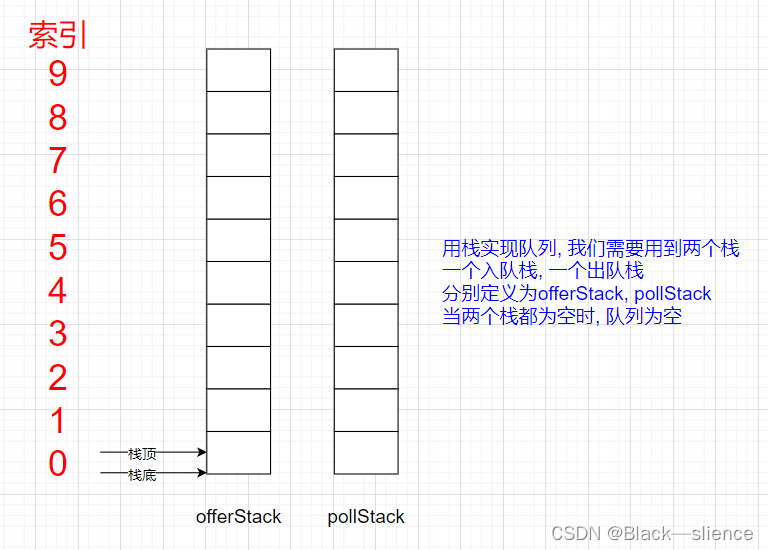
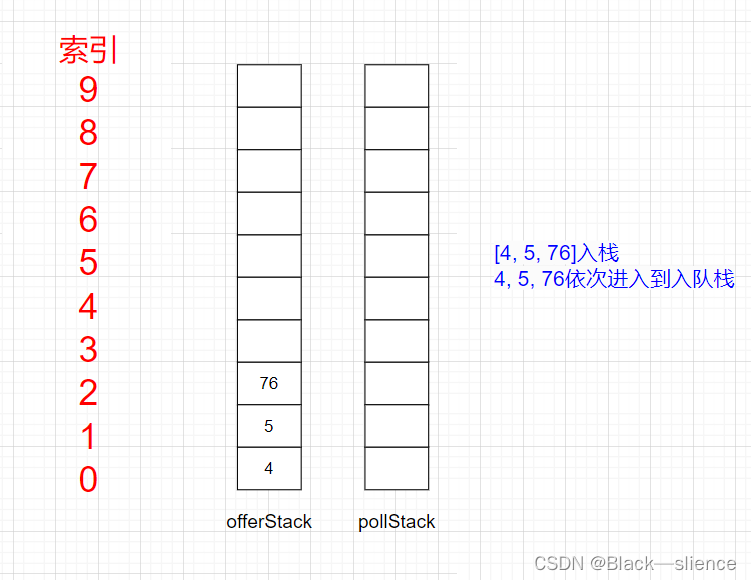
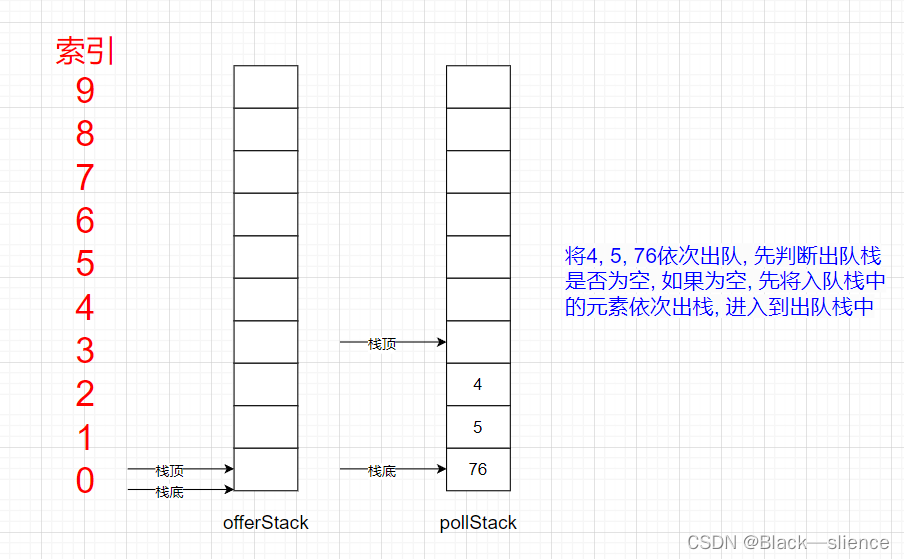
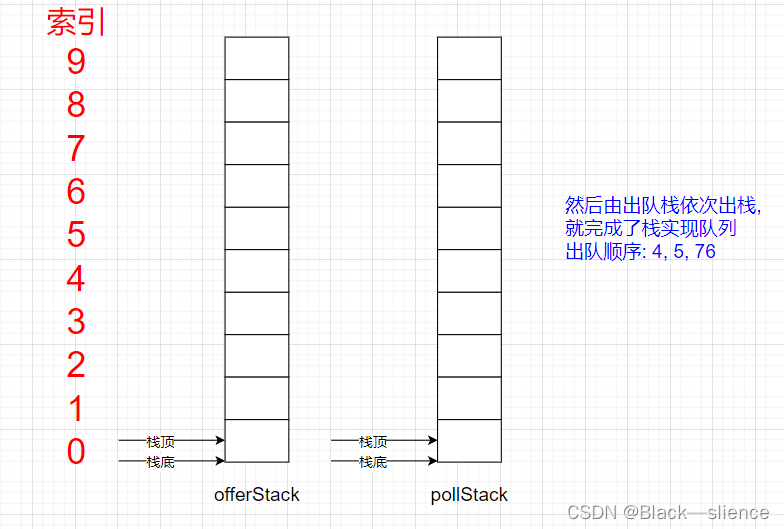
代码:
public class MyQueue {
private Stack<Integer> offerStack;// 入队栈
private Stack<Integer> pollStack;// 出队栈
public MyQueue() {
offerStack = new Stack<>();
pollStack = new Stack<>();
}
// 入队
public void offer(int x) {
offerStack.push(x);
}
// 出队
public int poll() {
if (!empty()) {
if (pollStack.empty()) {
offerToPoll();
}
return pollStack.pop();
}
return -1;
}
// 入队栈向出队栈转移元素
private void offerToPoll() {
if (!offerStack.empty()) {
int size = offerStack.size();
for (int i = 0; i < size; i++) {
pollStack.push(offerStack.pop());
}
}
}
// 返回队头的元素
public int peek() {
if (!empty()) {
if (pollStack.empty()) {
offerToPoll();
}
return pollStack.peek();
}
return -1;
}
// 判断队列是否为空
public boolean empty() {
return offerStack.empty() && pollStack.empty();
}
}队列实现栈
实现方式: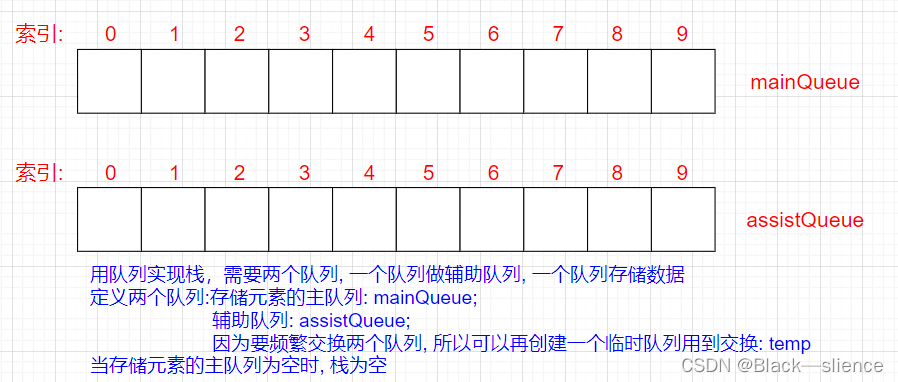

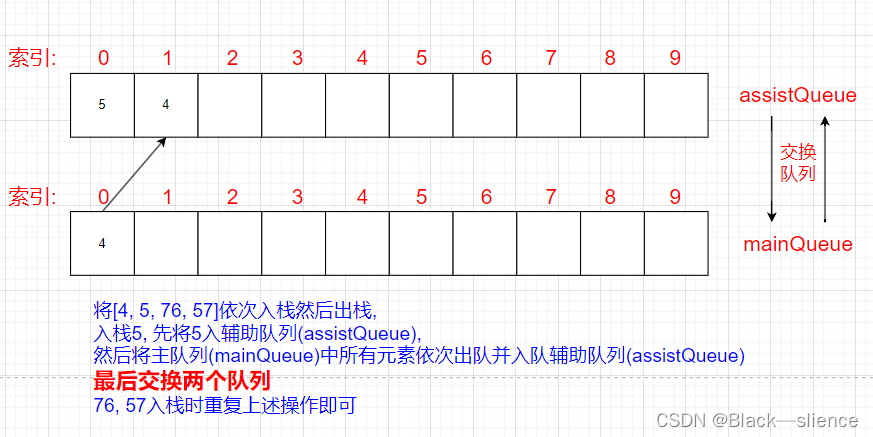
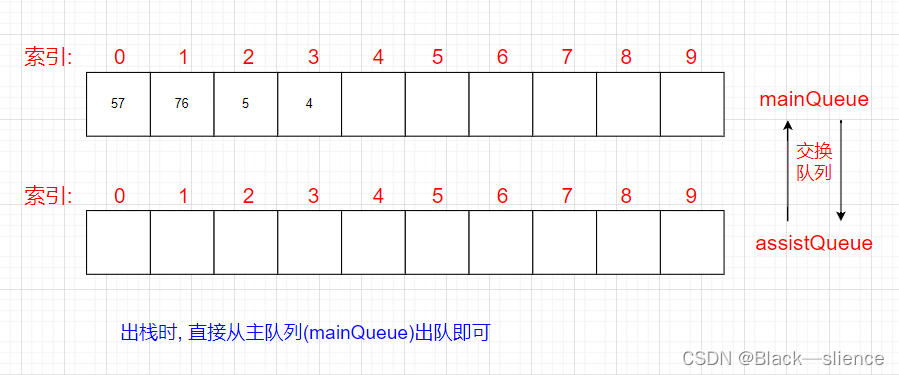
代码:
public class MyStack {
private LinkedList<Integer> mainQueue;// 主队列
private LinkedList<Integer> assistQueue;// 辅助队列
private LinkedList<Integer> temp;// 交换两个队列的中间变量
public MyStack() {
mainQueue = new LinkedList<>();
assistQueue = new LinkedList<>();
temp = null;
}
// 入栈
public void push(int x) {
assistQueue.offer(x);
while (!mainQueue.isEmpty()) {
assistQueue.offer(mainQueue.poll());
}
temp = assistQueue;
assistQueue = mainQueue;
mainQueue = temp;
}
// 出栈
public int pop() {
Integer result = null;
if (!mainQueue.isEmpty()) {
result = mainQueue.poll();
}
return result;
}
// 查看栈顶元素
public int peek() {
Integer result = null;
if (!mainQueue.isEmpty()) {
result = mainQueue.peek();
}
return result;
}
// 判断栈是否为空
public boolean empty() {
return mainQueue.isEmpty();
}
}
文章来源:https://blog.csdn.net/2301_77713282/article/details/135789149
本文来自互联网用户投稿,该文观点仅代表作者本人,不代表本站立场。本站仅提供信息存储空间服务,不拥有所有权,不承担相关法律责任。 如若内容造成侵权/违法违规/事实不符,请联系我的编程经验分享网邮箱:chenni525@qq.com进行投诉反馈,一经查实,立即删除!
本文来自互联网用户投稿,该文观点仅代表作者本人,不代表本站立场。本站仅提供信息存储空间服务,不拥有所有权,不承担相关法律责任。 如若内容造成侵权/违法违规/事实不符,请联系我的编程经验分享网邮箱:chenni525@qq.com进行投诉反馈,一经查实,立即删除!
最新文章
- Python教程
- 深入理解 MySQL 中的 HAVING 关键字和聚合函数
- Qt之QChar编码(1)
- MyBatis入门基础篇
- 用Python脚本实现FFmpeg批量转换
- jdk动态代理与cglib代理区别1
- 单机多进程,每个进程多张卡 mpi nccl 程序设计检验
- ThinkPad Fn+F功能键自定义
- 3d模型显示不出来?3d不显示全模型---模大狮模型网
- bash脚本进行大规模程序编译
- 中霖教育:2024年注册会计师报名缴费时间
- 基于多反应堆的高并发服务器【C/C++/Reactor】(中)在EventLoop的任务队列中添加新任务
- NGINX日志配置参数
- 伸向Markdown的黑手,知名博客平台曝出LFI漏洞
- MyBatis增删改查基础及其xml文件